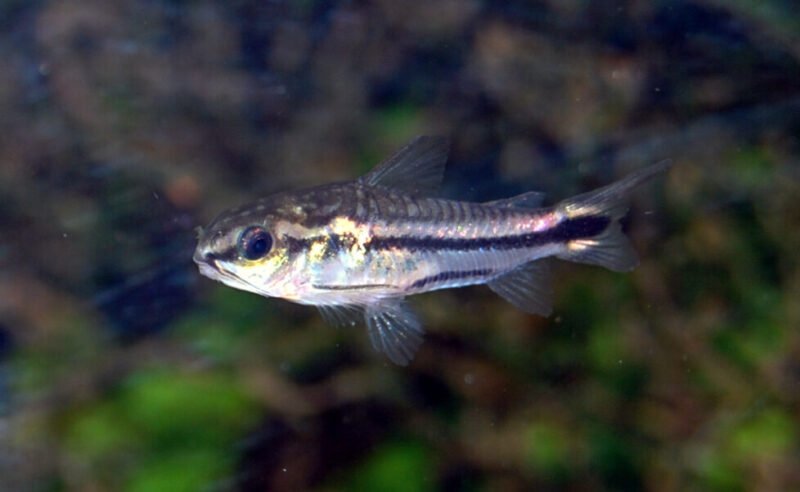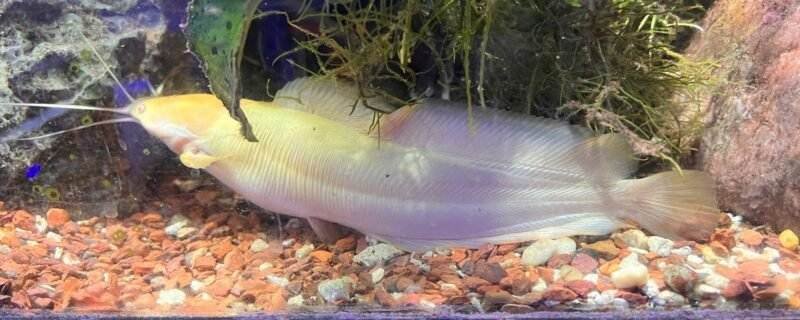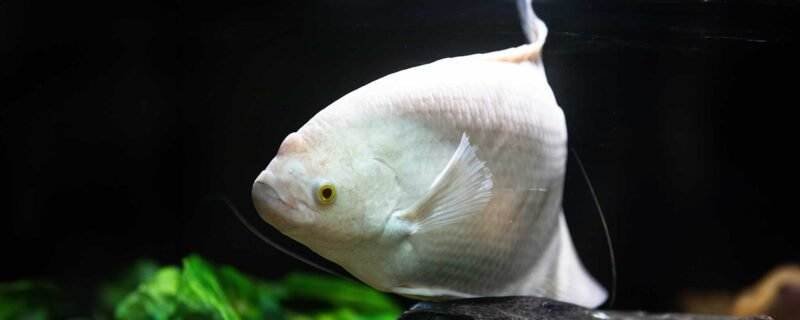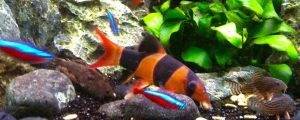Corydoras loxozonus, a peaceful and attractively patterned member of the Corydoradinae subfamily, is a delightful freshwater fish that brings both activity and calmness to the lower levels of any community tank. Known for its subtle elegance, black horizontal banding, and social nature, this species is a popular choice among aquarists who appreciate well-behaved bottom-dwellers.
Let’s dive into the world of Corydoras loxozonus—covering everything from native habitat and size, to breeding and albino variations.
Common Name and Latin Name
-
Common Name: Loxozonus Cory
-
Latin Name: Corydoras loxozonus
This species belongs to the family Callichthyidae, which includes armored catfishes characterized by bony plates along their bodies and a peaceful temperament.
Native Habitat
Corydoras loxozonus is native to Colombia, specifically within tributaries of the Rio Meta and Rio Orinoco basins. These rivers and streams typically have slow currents, soft sandy or muddy substrates, and are heavily vegetated. The waters are often slightly acidic and warm, creating an ideal environment for this bottom-dwelling scavenger.
Size and Appearance
Adult Corydoras loxozonus typically grow to 5–6 cm (2–2.5 inches) in length. They have a creamy or silvery base coloration with a distinct horizontal black stripe running from the snout, through the eye, and along the lateral line to the base of the tail. Their fins are generally translucent, and their body is slightly taller than many other Corydoras species, giving them a more robust look.
Diet
Corydoras are omnivores, and Corydoras loxozonus is no exception. In the wild, they feed on small worms, crustaceans, plant matter, and detritus.
In the aquarium, provide a varied diet that may include:
-
Sinking pellets or wafers
-
Live or frozen foods (bloodworms, daphnia, brine shrimp)
-
Blanched vegetables (zucchini, spinach)
-
Occasional algae wafers
Feeding should be done once or twice a day, ensuring food reaches the bottom where they naturally forage.
Sexing
Sexual dimorphism in Corydoras loxozonus is subtle but present:
-
Females are usually larger and rounder, especially when viewed from above.
-
Males are slimmer and may appear more streamlined.
During the breeding season, these differences become more noticeable.
Breeding
Breeding Corydoras loxozonus in captivity is achievable and follows the typical Corydoras spawning pattern:
-
Condition males and females with protein-rich foods.
-
Perform a cool water change (2–3°C lower) to simulate the onset of the rainy season.
-
A group of 1 female to 2 males often yields the best results.
Eggs are usually deposited on glass, plant leaves, or décor. After spawning:
-
Remove adults to prevent egg predation.
-
Maintain soft, slightly acidic water.
-
Eggs hatch in 3–5 days, and fry can be fed infusoria or powdered fry food, transitioning to baby brine shrimp.
Water Conditions
To thrive, Corydoras loxozonus needs clean, stable water with the following parameters:
-
Temperature: 22–26°C (72–79°F)
-
pH: 6.0–7.2
-
Hardness: Soft to moderate (2–12 dGH)
A soft sand substrate is ideal to prevent barbel damage, and moderate filtration with low current is preferred. Frequent water changes help maintain water quality, which is essential for their health and activity.
Ease of Care
Ease of Care: Easy to Moderate
This species is beginner-friendly as long as proper tank conditions are maintained. They are sensitive to poor water quality and sharp substrates, but otherwise hardy and low-maintenance.
Tank Mates and Community Behavior
Corydoras loxozonus is a peaceful schooling fish. It should be kept in groups of at least six to ensure natural behavior and reduce stress.
Ideal tank mates include:
-
Small peaceful tetras (e.g., Ember, Rummy-nose)
-
Rasboras
-
Pencilfish
-
Otocinclus
-
Peaceful dwarf cichlids (e.g., Apistogramma)
Avoid housing them with large or aggressive species that may harass or outcompete them for food.
Species Variations and Albino Form
There is no well-documented albino version of Corydoras loxozonus specifically, though albino Corydoras (typically Corydoras aeneus) are widely available in the hobby. These albinos share many behavioral traits with C. loxozonus but differ in coloration and genetic lineage.
There are also no known long-fin or color morph varieties of C. loxozonus, as they are still relatively rare in the hobby compared to more commonly bred Cory species.
Related Species
Corydoras loxozonus is closely related in body shape and behavior to species like:
-
Corydoras melini (often confused due to similar black banding)
-
Corydoras arcuatus
-
Corydoras adolfoi
However, loxozonus can be distinguished by its unique body stripe and slightly deeper body.
Summary
Corydoras loxozonus is a striking and peaceful addition to any well-maintained community aquarium. With their charming behavior, low-maintenance care needs, and excellent compatibility with other peaceful fish, they offer both aesthetic value and function as substrate cleaners. Though not as commonly found as other Corydoras species, their understated beauty and group dynamics make them a rewarding choice for aquarists ready to give them the soft-bottom, well-oxygenated tank they deserve.







